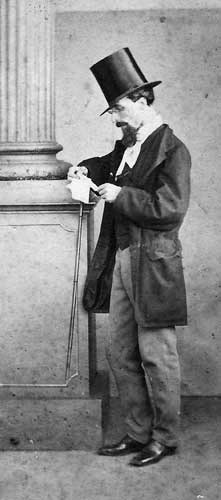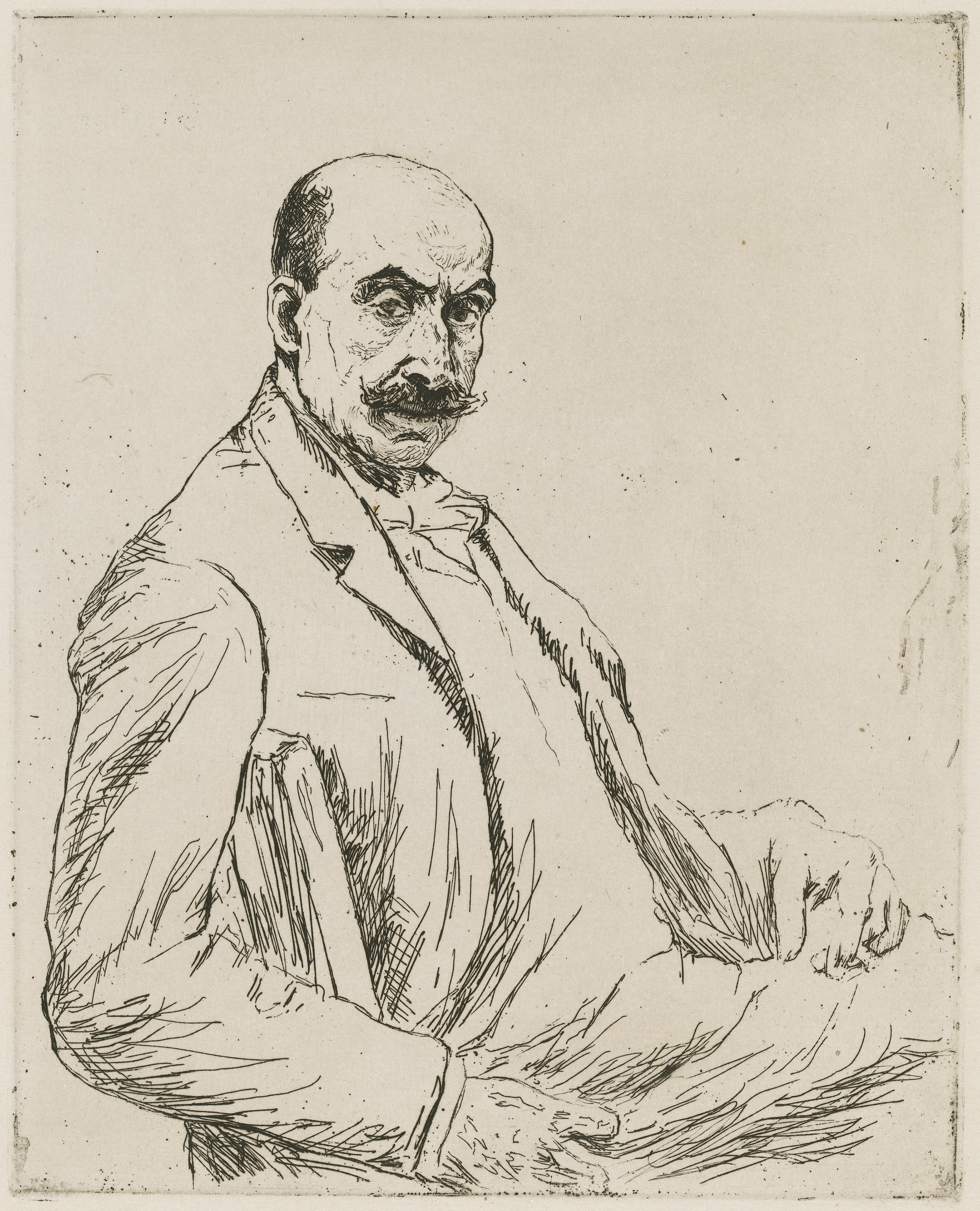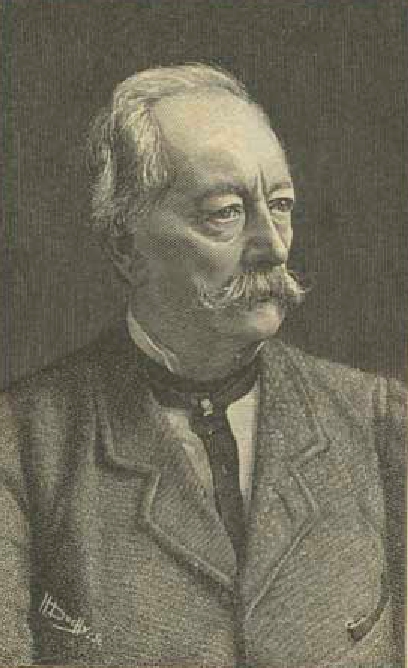|
Hollandsche Teekenmaatschappij
The Hollandsche Teekenmaatschappij (''Dutch drawing society'') was an international art society founded in 1876 in The Hague. The purpose of the society was to promote watercolor painting as an art in itself, which until then had been known only as a sketching technique. Geschiedenis en leden In 1855, the Société Belge des Aquarellistes was established in Brussels and one of the founders was Willem Roelofs. The society organized exhibitions of Belgian watercolor painters. After a few years members of the Hague School were invited to attend. Soon after this, the Dutch sister society was founded on 31 January 1876. The founders were: Bernardus Johannes Blommers, Johannes Bosboom, Jozef Israëls, Jacob Maris, Willem Maris, Anton Mauve, Hendrik Willem Mesdag, Philip Sadée, Kate Bisschop-Swift, Julius van de Sande Bakhuyzen and Johannes Stortenbeker. The society enjoyed international acclaim and had honorary members living outside the Netherlands. Among the honorary members were s ... [...More Info...] [...Related Items...] OR: [Wikipedia] [Google] [Baidu] |
The Hague
The Hague ( ; nl, Den Haag or ) is a city and municipality of the Netherlands, situated on the west coast facing the North Sea. The Hague is the country's administrative centre and its seat of government, and while the official capital of the Netherlands is Amsterdam, The Hague has been described as the country's de facto capital. The Hague is also the capital of the province of South Holland, and the city hosts both the International Court of Justice and the International Criminal Court. With a population of over half a million, it is the third-largest city in the Netherlands, after Amsterdam and Rotterdam. The Hague is the core municipality of the Greater The Hague urban area, which comprises the city itself and its suburban municipalities, containing over 800,000 people, making it the third-largest urban area in the Netherlands, again after the urban areas of Amsterdam and Rotterdam. The Rotterdam–The Hague metropolitan area, with a population of approximately 2.6&n ... [...More Info...] [...Related Items...] OR: [Wikipedia] [Google] [Baidu] |
Paul Gabriël
Paul Joseph Constantin Gabriël or Paul Gabriël (5 July 1828 – 23 August 1903) was a painter, draftsman, watercolorist, and etcher who belonged to the Hague School. Biography Gabriël was born in Amsterdam, the son of the sculptor and painter, Paul Joseph Gabriël. From 1840 until 1843 he was educated at the State Academy of Fine Arts in Amsterdam, where he was a pupil of Louis Zocher. The following year he went to the German town of Cleves, where Barend Cornelis Koekkoek had founded a drawing academy. Later he returned to the Netherlands and studied with Cornelis Lieste in Haarlem. Here he became acquainted with Anton Mauve, with whom he was to work with often. In 1853 Gabriël moved to Oosterbeek, also called the 'Dutch Barbizon', where landscape painter Johannes Warnardus Bilders had gathered around him many young painters. The members of this group would later become central figures in the Hague School. In 1858, Gabriël introduced Anton Mauve to the area, who would retu ... [...More Info...] [...Related Items...] OR: [Wikipedia] [Google] [Baidu] |
Sina Van Houten
Sina (Sientje) van Houten (23 December 1834 Groningen – 20 March 1909 The Hague) was the wife of Hendrik Willem Mesdag, the Dutch marine painter of the Hague School, and a painter herself. Biography She was the eldest of seven children of Derk van Houten and Barbara Elisabeth Meihuizen. One of her brothers was later Minister Samuel van Houten. Her father had a large sawmill on the Damsterdiep. She married Mesdag on 23 April 1856. Sientje was a strong moral support to her husband, especially when she enthusiastically supported him in 1866, when he gave up his business profession solely for painting. She began to paint in 1871, after she lost her only child, the 8-year-old Klaas. Gerkens Arnaud helped her drawing, while her painting was aided by her husband and her cousin Lawrence Alma-Tadema. She specialized in landscapes and still lifes, but also painted portraits. In 1874, together with Gerardina Jacoba van de Sande Bakhuyzen, Kate Bisschop-Swift and Margaretha Roosenboom, ... [...More Info...] [...Related Items...] OR: [Wikipedia] [Google] [Baidu] |
Albert Neuhuys
Johannes Albert Neuhuys (10 June 1844 – 6 February 1914) was one of the best-known painters of the Laren School and a friend of many of the Hague School painters. Biography Neuhuys was born in Utrecht. He went to the Municipal Drawing School in Utrecht from 1858 to 1860 and then worked for the lithographer Van de Weyer in Utrecht, who went bankrupt two years later. From that time on, Neuhuys devoted himself to drawing and painting. From 1868 to 1872, he took lessons at the Antwerp Academy, where he was supported by a royal stipend. Here he painted interiors, specializing in the shine of satin clothes, after the example of the 17th-century artist Pieter de Hooch. In 1872, Neuhuys moved to Amsterdam, where he met Jozef Israëls, Anton Mauve and the brothers Jacob Maris and Matthijs Maris. In 1876, he moved to The Hague. Much like the other Hague School painters, his detailed manner of painting changed to a much looser stroke. His use of color was also inspired by Jacob Mari ... [...More Info...] [...Related Items...] OR: [Wikipedia] [Google] [Baidu] |
Adolph Artz
David Adolph Constant Artz (The Hague, 1837 – The Hague, 1890) was a 19th-century Dutch painter and collector who associated with some members of the Hague School. Biography From 1855 to 1864 Artz trained with J.H. Egenberger and Louis Royer at the Amsterdam Academie.David Adolph Constant Artz in the There he met , whose fishing subjects were to be a lasting source of inspiration for Artz. He worked with Israëls in in 1859. Unlike Israëls, ... [...More Info...] [...Related Items...] OR: [Wikipedia] [Google] [Baidu] |
Vincenzo Cabianca
Vincenzo Cabianca (June 21, 1827, Verona – March 21, 1902, Rome) was an Italian painter of the Macchiaioli group. Biography He was born in Verona in modest circumstances. He began his artistic training at the Verona Academy under Giovanni Caliari, and then studied at the Venice Academy from 1845 to 1847.Steingräber, E., & Matteucci, G. 1984, p. 107. An admirer of Giuseppe Mazzini, he became associated with the Young Italy (historical), Young Italy movement and was taken prisoner while participating in the defense of Bologna in 1848. After his release he lived in Venice from 1849 until 1853. During the 1850s Cabianca became acquainted with the artists, including Adriano Cecioni, Cristiano Banti, and Telemaco Signorini, who frequented the Caffè Michelangiolo in Florence, who would be known as the Macchiaioli. He became a friend of Signorini, and travelled with Signorini and Banti to Paris. His friend's influence led Cabianca to turn away from Genre art, genre paintings toward ... [...More Info...] [...Related Items...] OR: [Wikipedia] [Google] [Baidu] |
Mose Bianchi
Mose, Mosè, or Mosé is a given name which may refer to: People In religion * Mose Durst, former president of the Unification Church of the United States * Mosé Higuera, Colombian Catholic bishop * Mosè Tovini, Italian Roman Catholic priest In music * Mose Allison, American jazz pianist and singer * Mose Christensen, American musician, founder and conductor of the Oregon Symphony * Mose Rager, guitar player from Kentucky In visual art * Mosè Bianchi, Italian painter and printmaker * Mose Tolliver, American painter * Mosè Turri, Italian painter In sports * Mosé Arosio, Italian racing cyclist * Mose Bashaw, NFL player * Mose Lantz, NFL player * Mosé Navarra, former tennis player from Italy * Mose Solomon, the "Rabbi of Swat", American Major League Baseball player * Mose Tuiali'i, rugby union player In other fields * Mose (Ancient Egyptian official), 13th-century BCE Egyptian official under Ramesses II * Mose (scribe), 13th-century BCE Egyptian scribe under Ramesses II * ... [...More Info...] [...Related Items...] OR: [Wikipedia] [Google] [Baidu] |
Hubert Von Herkomer
Sir Hubert von Herkomer (born as Hubert Herkomer; 26 May 1849 – 31 March 1914) was a Bavarian-born British painter, pioneering film-director, and composer. Though a very successful portrait artist, especially of men, he is mainly remembered for his earlier works that took a realistic approach to the conditions of life of the poor. ''Hard Times'' (1885; Manchester Art Gallery) showing the distraught family of a travelling day-labourer at the side of a road, is one of his best-known works. Early life and education Herkomer was born on 26 May 1849 at Waal, in the Kingdom of Bavaria, the son of Lorenz Herkomer, a wood-carver of great ability, and his wife Josephine Niggl. His family was poor, and his mother tried to supplement his father’s earnings by giving music lessons. Once his mother gave him a half sovereign for some shopping: "It was the last piece of gold in the place. I lost it. My parents were in despair".''Chums'' annual, 1896, p. 279 Lorenz Herkomer left Bavaria in ... [...More Info...] [...Related Items...] OR: [Wikipedia] [Google] [Baidu] |
Max Liebermann
Max Liebermann (20 July 1847 – 8 February 1935) was a German painter and printmaker, and one of the leading proponents of Impressionism in Germany and continental Europe. In addition to his activity as an artist, he also assembled an important collection of French Impressionist works. The son of a Jewish banker, Liebermann studied art in Weimar, Paris, and the Netherlands. After living and working for some time in Munich, he returned to Berlin in 1884, where he remained for the rest of his life. He later chose scenes of the bourgeoisie, as well as aspects of his garden near Lake Wannsee, as motifs for his paintings. Noted for his portraits, he did more than 200 commissioned ones over the years, including of Albert Einstein and Paul von Hindenburg. Liebermann was honored on his 50th birthday with a solo exhibition at the Prussian Academy of Arts in Berlin, and the following year he was elected to the academy. From 1899 to 1911 he led the premier avant-garde formation in Germany ... [...More Info...] [...Related Items...] OR: [Wikipedia] [Google] [Baidu] |
Lawrence Alma-Tadema
Sir Lawrence Alma-Tadema, (; born Lourens Alma Tadema ; 8 January 1836 – 25 June 1912) was a Dutch painter who later settled in the United Kingdom becoming the last officially recognised denizen in 1873. Born in Dronryp, the Netherlands, and trained at the Royal Academy of Antwerp, Belgium, he settled in London, England in 1870 and spent the rest of his life there. A classical-subject painter, he became famous for his depictions of the luxury and decadence of the Roman Empire, with languorous figures set in fabulous marbled interiors or against a backdrop of dazzling blue Mediterranean Sea and sky. Alma-Tadema was considered one of the most popular Victorian painters. Though admired during his lifetime for his draftsmanship and depictions of Classical antiquity, his work fell into disrepute after his death, and only since the 1960s has it been re-evaluated for its importance within nineteenth-century British art. Biography Early life Lourens Alma Tadema was born on 8 ... [...More Info...] [...Related Items...] OR: [Wikipedia] [Google] [Baidu] |
Charles Rochussen
Charles Rochussen ( Kralingen, 1 August 1814 – Rotterdam 22 September 1894) was a 19th-century painter from Rotterdam, the Netherlands, who was also known as an illustrator and printmaker. Charles was the second son of the wealthy businessman and art collector Hendrik Rochussen (1779–1852), who was himself an amateur draftsman of some distinction and owned an extensive art and history library. His brother Henri Rochussen (1812–89) became a painter. While still a child, Charles showed a talent for drawing; between 1831 and 1834 he produced watercolor studies of birds. However, it was decided that he would pursue a career in business. He worked for a few years in an office before resolving at the age of 22 to turn to painting. In 1837 he enrolled at the academy in The Hague, where he was taught by Wijnand Nuijen (1813–39) and, after Nuyen's death, by Anthonie Waldorp (1803–66). [...More Info...] [...Related Items...] OR: [Wikipedia] [Google] [Baidu] |








